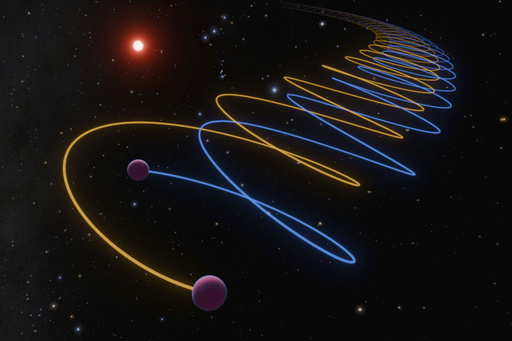
NEW YORK — A recent study has revealed that a celestial body identified decades ago, known as Gliese 229B, consists of two brown dwarfs that are in close orbit with one another. This finding sheds light on an astronomical phenomenon that has baffled scientists since the object’s discovery 30 years ago.
Brown dwarfs are unique astronomical entities that fall between the categories of gas giant planets and stars; they have more mass than the former but less than the latter, leading them to be termed as “failed stars.” Gliese 229B had previously been considered too faint in light for the mass it possesses, prompting further investigation. Recently, astronomers used the Very Large Telescope located in Chile to analyze this puzzling object in detail, ultimately confirming that it is indeed a binary system.
Kevin Luhman, an astronomer from Pennsylvania State University who was not a part of this particular research effort, noted that this discovery addresses a significant inconsistency regarding the brightness to mass relationship of this celestial body.
The two brown dwarfs are in orbit around a small star situated roughly 18 light-years away from Earth, a considerable distance measured at about 5.8 trillion miles per light-year. While there have been previous observations of brown dwarf pairs, the unique aspect of Gliese 229B is that these two objects orbit each other at a remarkably close distance, completing their mutual orbit every 12 days, which is even shorter than the lunar cycle that governs the Earth’s moon.
The finding highlights the fascinating complexity of the universe and the diverse nature of solar systems compared to our own, as noted by Rebecca Oppenheimer, a study co-author affiliated with the American Museum of Natural History. The results of this groundbreaking research were published in the journal Nature on Wednesday.
Furthermore, the implications of this discovery suggest that there may be additional brown dwarfs in our cosmos that are similarly concealed in binary systems. Jerry Xuan, another co-author from the California Institute of Technology, pointed out the potential for other hidden pairs among these enigmatic celestial objects.
